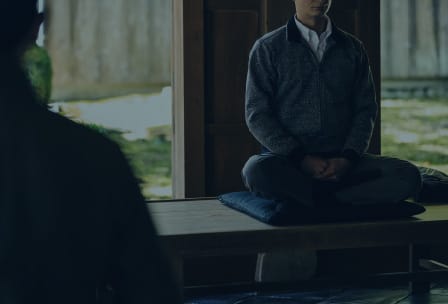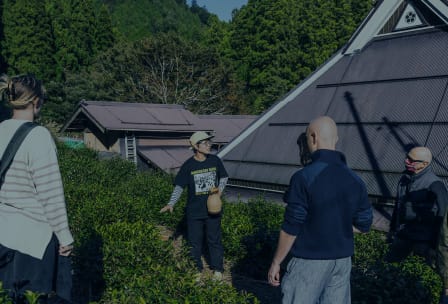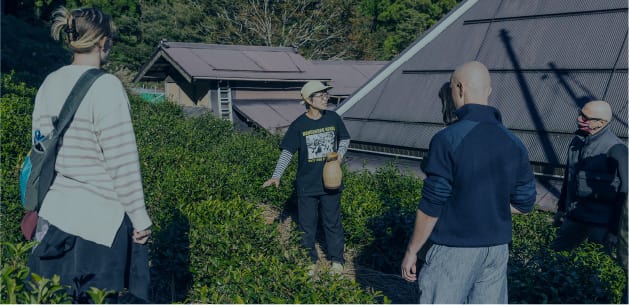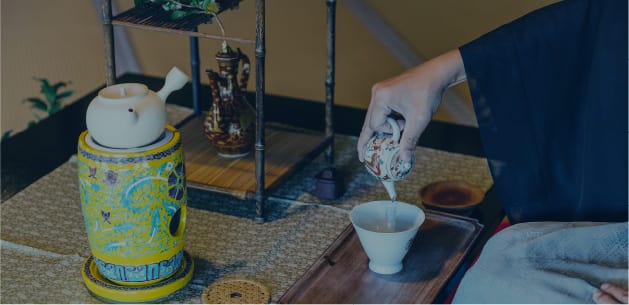
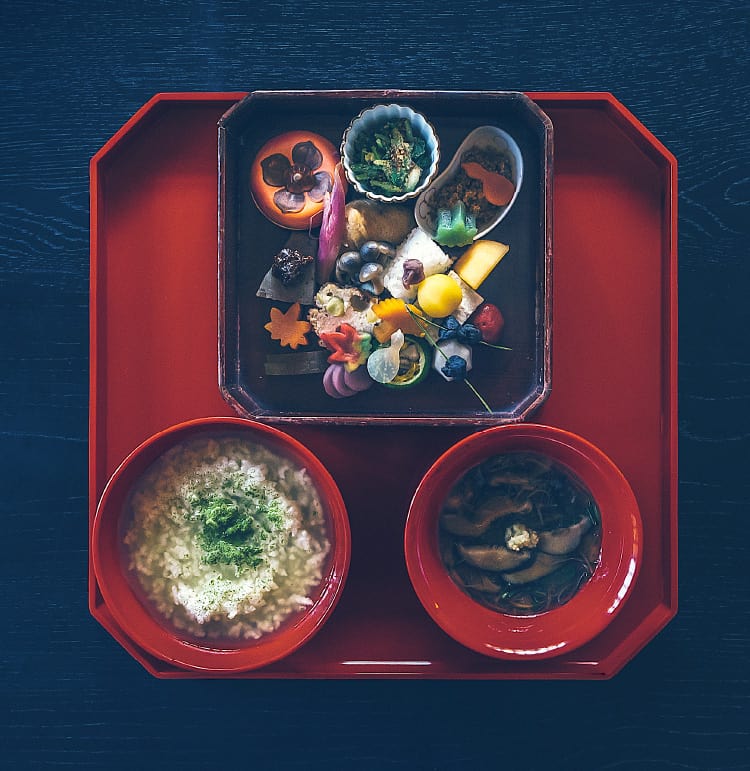
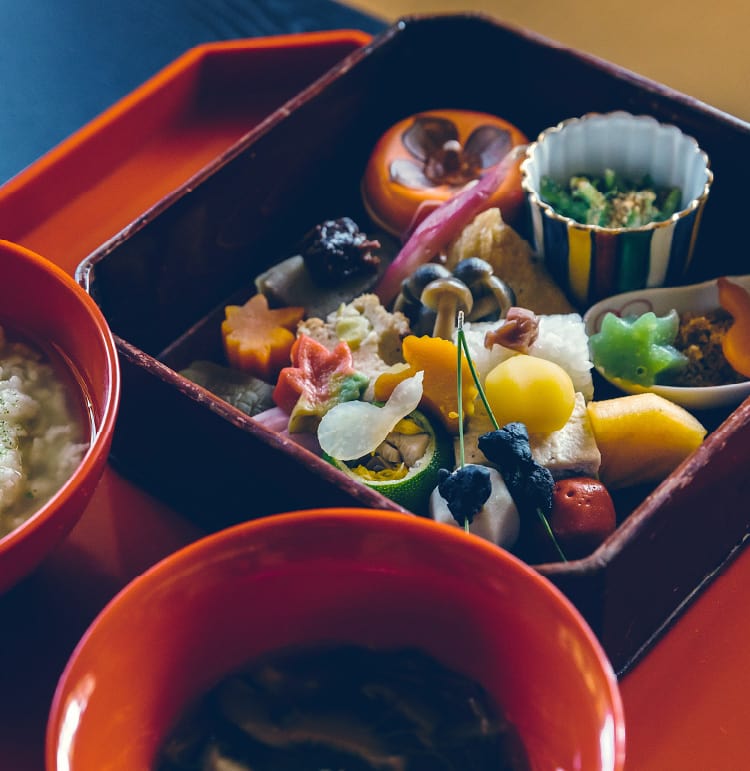

Buddhist
Vegetarian Cuisine
The cuisine is characterized by the use of only ingredients suitable for Buddhist cultivation, such as vegetables, grains, seaweed, beans, nuts, and fruits. It does not include meat, seafood, or Allium plants like onions and garlic. In this program, a famous chef from Shiga puts a modern spin on this cuisine to make it more enjoyable. Participants can enjoy a variety of dishes, including tea porridge made with Mandokoro tea, a rare and choice tea grown at Mandokoro in the Eigen-ji area, and Eigen-ji konjac, which originated at the temple. Enjoy a unique Buddhist vegetarian cuisine that draws from the bounty of the Eigen-ji area’s natural environment.




Mandokoro Bancha Tea Porridge with a Dusting of Sencha Tea Powder
Tea porridge made from Mandokoro hirabancha tea and sprinkled with premium sencha tea powder.
From the Eigen-ji Temple and Mandokoro area, water flows to the entire Higashiomi area, which leads to Lake Biwa. Mandokoro tea trees grow by soaking up the minerals from the mountains that provide this water, so the mountains’ natural environment is reflected in the tea’s flavor. Rice porridge is widely eaten in Asian rice-eating cultures. Today’s rice porridge is an adaptation of a method handed down in fancy traditional Japanese restaurants for more than 400 years.
Braised Owada Okara and Eigen-ji Maitake Mushrooms
Okara is produced in the process of making tofu and is sometimes thrown away. However, it does a good job of absorbing dashi broth, so it tastes good prepared with the leftover liquid from simmered dishes. It’s an ingredient of the masses. Cooking and eating food without wasting anything embodies a spiritual philosophy of gratitude for all the food we obtain, a value that still remains in many Japanese people today.
Imitation Meat Dumplings with Gingko Nuts and Lily Bulbs
The nuts of the ginkgo tree are harvested only in the fall. The Japanese are particularly fond of ginkgo nuts and use them in a variety of dishes. The imitation meat dumplings, called hirosu, are made with tofu. In Japanese, such meat imitation dishes are referred to as modoki ryori. Modoki means “pseudo-” and is a major way to prepare Buddhist vegetarian dishes.
Miso Glazed Eigen-ji Konjac (Dengaku)
Eigen-ji konjac flavored by simmering and coated with a miso sauce. While “dengaku” originally referred to a ritual dance to pray for a bountiful harvest that emerged from Japan’s animism in times of old, food on a skewer then came to be called dengaku because of the similarity of its silhouette to the dengaku ritual dance. Today, dishes coated with miso and baked, as well as this preparation method, are called dengaku. Dengaku is a traditional dish that has been around for about 500 years.
Hachiman Red Ball-shaped Konjac Simmered with Red Pepper
Omihachiman is located in the lowest basin of the Echi River, which flows beside Eigen-ji Temple. Red konjac has been produced there for about 450 years. Iron sesquioxide powder is mixed into the konjac. It is the only food of its kind.
This is an example menu. Items vary depending on the season.
Time required
About 1 hour
Capacity(reservations)
4–15 persons
Periods
April to July
and
September to October


